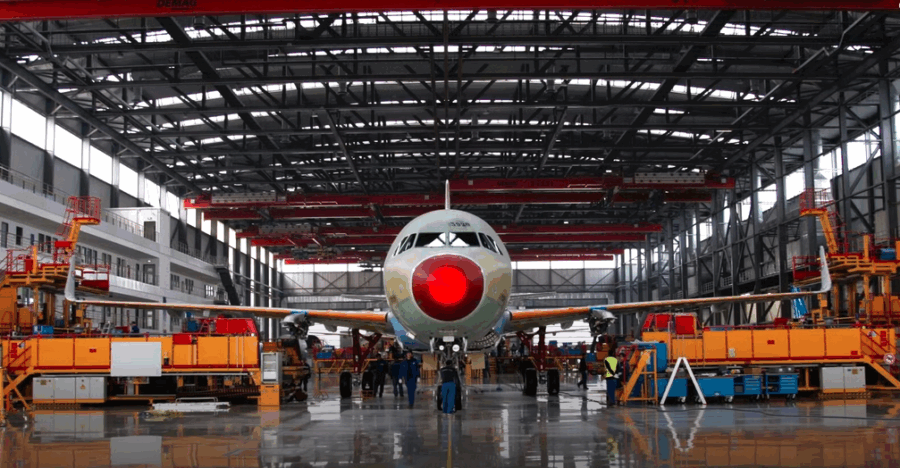Airbus Expands A320neo Production with New Assembly Lines in US, China

Airbus is expanding its global production footprint with the launch of two new final assembly lines (FALs) for the A320neo family—one in the United States and another in China. The dual openings, set for October, are central to Airbus’s strategy of producing 75 A320 family aircraft per month by 2027. The move comes as the manufacturer works to ease a record backlog of more than 7,000 aircraft.
The first opening will take place on October 13 at Airbus’s Mobile, Alabama, facility, where a second A320 line will double output for North American customers. Days later, Airbus will inaugurate its second FAL in Tianjin, China, strengthening ties with its largest single national market. The Tianjin expansion also carries strategic weight as Airbus negotiates a reported 500-aircraft order from Chinese airlines, all while navigating sensitive U.S.–China trade tensions.
At present, Airbus delivers an average of 48 A320neo family aircraft per month, far below its target. At that pace, it would take over 12 years to clear the existing backlog. By boosting production in Mobile and Tianjin, the company expects each site to add roughly 15 aircraft per month, matching the two FALs in Toulouse, France. Hamburg remains Airbus’s largest A320 hub, operating four FALs, including one dedicated to the long-range A321XLR.
CEO Guillaume Faury underscored the strategic importance of the expansion: “By 2026, Airbus will have ten A320 family final assembly lines worldwide, with the U.S. and China each representing 20 percent of our global production capacity. This ramp-up will benefit the entire aerospace industry’s value chain.”
Beyond the new lines, Airbus is also investing in modernization across existing FALs. Enhancements include advanced digital production controls, automated logistics systems, and the use of light robotics—measures designed to raise throughput and standardize output across Toulouse, Hamburg, Mobile, and Tianjin.
The expansion underscores Airbus’s long-term commitment to leading the single-aisle aircraft market, where the A320neo competes directly with Boeing’s 737 Max. With Boeing still grappling with production delays and regulatory scrutiny, Airbus’s ability to scale efficiently could further cement its dominance in the narrowbody segment.
As of October 2025, Airbus is positioning itself for accelerated growth, with new U.S. and Chinese FALs complementing its European network. Together, these investments aim to achieve the ambitious target of 75 aircraft per month by 2027—reshaping the global aircraft production landscape.
Europe
Airbus has six A320 family final assembly lines in Europe, located at two sites:
Hamburg, Germany: This facility has four FALs and currently accounts for about half of the total A320 family production. It is also the site responsible for producing the long-range A321XLR variant. Hamburg’s estimated contribution to the 2027 target of 75 jets per month is 30 aircraft.
Toulouse, France: This facility has two FALs dedicated to A320 family production. Toulouse’s estimated contribution to the 2027 target is 15 aircraft per month.
Mobile, Alabama USA
A second FAL for the A320 family is scheduled to open in October 2025. Before the expansion, the Mobile facility assembled a single-digit number of A320s per month. With the new line, Mobile’s production capacity will be doubled, with a target of 15 aircraft per month by 2027.
Tianjin, China
In October 2025, Airbus is also opening a second FAL in Tianjin.
The expansion is a strategic move to serve the Chinese market and is a key step towards reaching the overall production goals. The Tianjin facility is also expected to produce 15 aircraft per month by 2027, up from a previous single-digit rate.
Global production outlook
- Current status (2025): The ramp-up is still underway. Supply chain issues have delayed the target of 75 aircraft per month, which was originally set for 2025 but has been pushed to 2027. In June 2025, Airbus’s average monthly A320neo delivery rate was 38 aircraft.
- Future goal (2027): Airbus is aiming for a combined global rate of 75 A320 family aircraft per month.
- Regional split (2026 and beyond): By 2026, the company expects its U.S. and China production capacity to each account for 20% of its global output
Yet the geopolitical backdrop adds a layer of complexity. With the U.S. and China locked in a prolonged trade dispute, both sides remain cautious about foreign industrial partnerships. Airbus has sought to strike a careful balance by inaugurating both new assembly lines in quick succession—signaling neutrality while reaffirming the importance of its two largest narrowbody markets.
While more than three-quarters of A320neo family aircraft are still built in Europe, the new assembly lines in Mobile and Tianjin mark a decisive shift toward a more decentralized production network. By spreading output across the U.S., China, and Europe, Airbus can shorten delivery times for customers while bolstering resilience against supply chain disruptions and political risk.
The company’s biggest challenge now is execution. Achieving the ambitious target of 75 aircraft per month will hinge on supplier reliability, workforce readiness, and the seamless integration of digital tools and automation across its global facilities. If Airbus can deliver, the ramp-up could reshape aircraft production worldwide—cementing its dominance in the single-aisle market and further widening the gap with its rival Boeing.
Related News: https://airguide.info/?s=airbus, https://airguide.info/category/air-travel-business/aircraft-finance/
Sources: AirGuide Business airguide.info, bing.com, simpleflying.com, airbus.com
